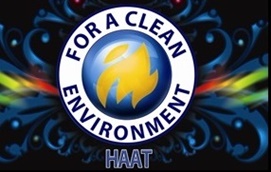
Engineering Solutions for Burning Issues
Engineering Solutions for Burning Issues
We are going to talk here not about the burning issues that are besieging the nation such as CAB, women safety, encounters, corruption in high places, etc. but on the contrary, we are going to relate to the waste disposal problems that confront an individual or a corporate every day.
These burning problems definitely need engineering solutions because in trying to resolve one problem, it should not lead to another problem. This can happen when an incinerator system is designed haphazardly. Secondly, concern for the environment should be paramount in coming up with the correct solution.
We work with our Swiss partner Clean Technology Universe (CTU) to resolve many difficult burning problems by providing an incinerator of the right design. The following will give an idea of how we go about tackling an issue or a problem from the beginning:
1. Heat Mass Balance:
a. Special software is used where the waste characteristics are fed into the system with desired outputs in terms of burning efficiency and emissions. The results and output would be somewhat similar to a process flow diagram. Temperatures at different points within the incineration system, flow rates and emissions through the entire configuration. This would decide sizing of each system and MOC based on temperatures. By doing a proper heat mass balance, we assure ourselves and the client of guaranteed emissions from the incinerator and of proper sizing of the equipment.
2. Design of the Incinerator System:
a. This involves calculating the thermal capacity of the incineration system, type of refractory and its thickness, type of scrubbing required, type of loading, stack and lifetime of the entire system.
b. At this point we will not look at the cost. We only look at the correct incinerator configuration based on the heat mass balance as well as the final guaranteed emissions.
c. Every single piece of equipment that forms part of the incinerator system has to be designed using the heat mass balance particularly the volume flow and temperatures.
d. Accordingly a bill of materials is prepared which is used for our own fabrication work as well as for freezing specifications of bought out items.
3. Basic and Detailed Engineering:
a. Basic engineering is done at the time of submitting a technical offer to the client which will be elaborated or modified depending on the need during detailed engineering at the time of project execution.
b. We also provide as-built drawings to show if there is any minor variations during installation. In most cases, basic and detailed engineering are done by HAAT but in difficult applications, CTU provides either or both.
4. Quality control:
a. Both manufactured and bought out items are subjected to inspection and strict quality control to ensure compliance to specified requirements and dimensions. Items are subject to `hold` points both at our end and at our vendor`s to avoid re-work. Traceability of raw materials is a must.
5. FAT and SAT:
a. All the manufactured and outsourced items are assembled together as per GA drawing and are subject to internal tests and then an incinerator Factory Acceptance Test in front of the client and his third party inspector, if any. Similarly an incinerator Site Acceptance Test is carried out after installation to demonstrate to everyone the expected performance of the entire incinerator system.
b. This attention to detail, proper design calculations, strict control of quality and testing at various stages of manufacture gives us the edge to compete with any company in the incinerator field anywhere in the world successfully and has enabled our presence in over 40 countries.
We have successfully executed hundreds of incinerator and thermal oxidiser projects globally, many of them in co-operation with CTU and are happy to say that our clients have been very satisfied with the results, which is evident from repeat contracts from scores of users. Many of our installations have belied our own expectations in terms of longevity of the systems.
We can truly say that we are able to provide “Engineering Solutions for Burning Issues”.


